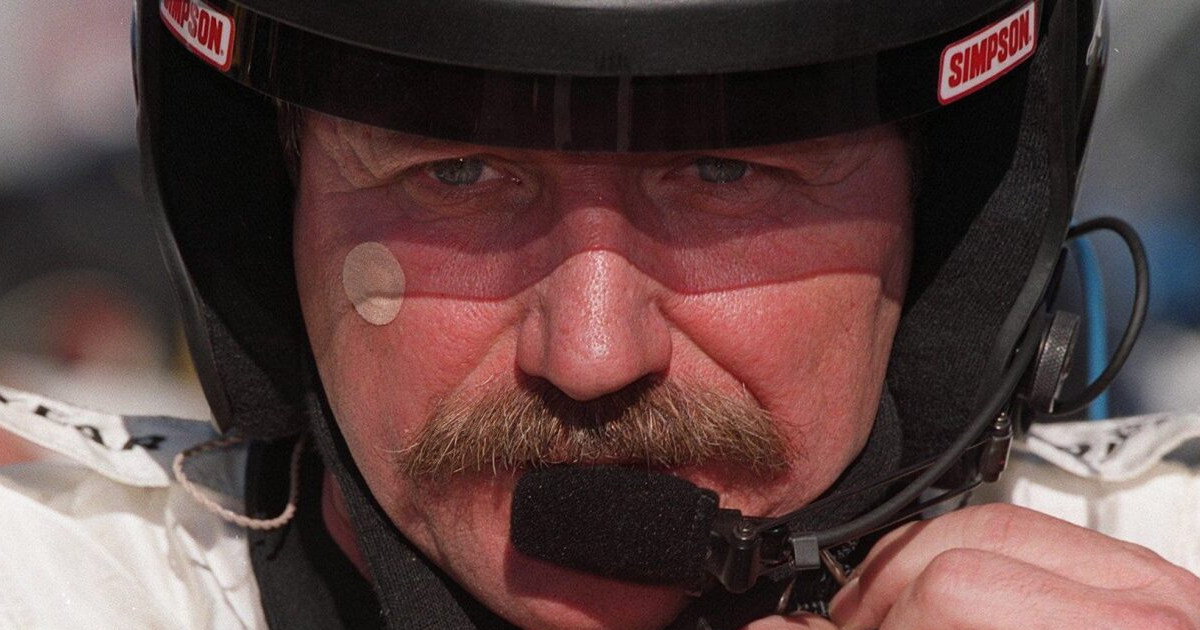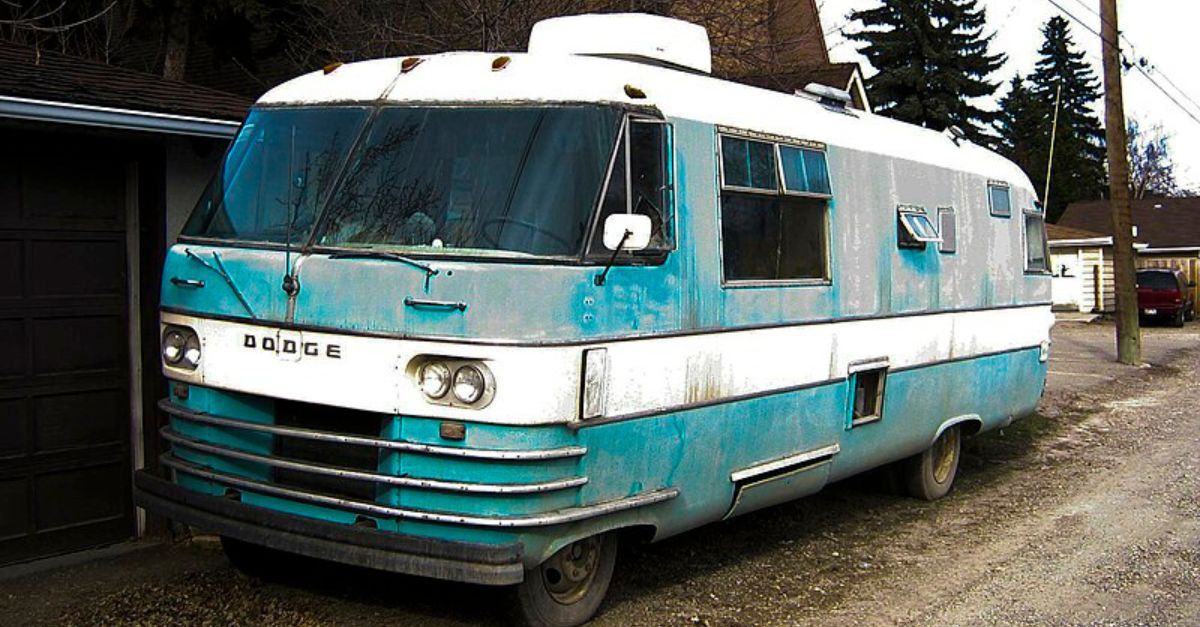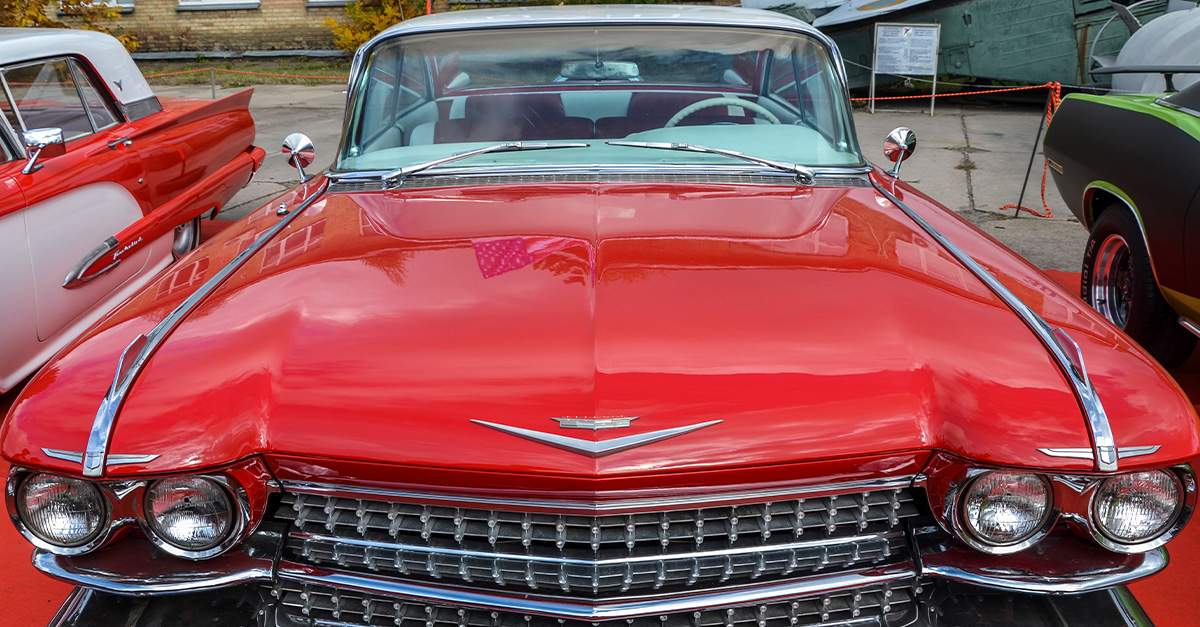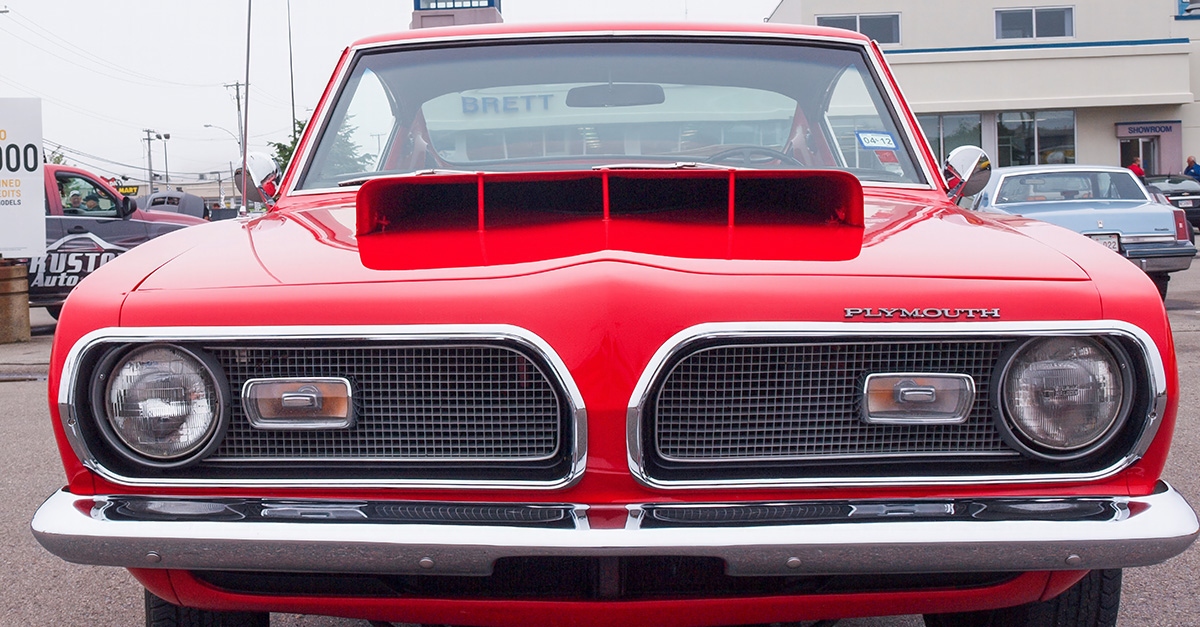Right Size, Right Time
Not all legends roar. The Mustang II Ghia whispered its way into automotive history during an era when excess lost its shine. Smart moves beat raw power, and this beauty showed that adaptation beats extinction every time.

Vision Behind The Wheel
When Lee Iacocca became Ford Motor Company president in December 1970, he immediately ordered the development of a smaller Mustang. As the driving force behind the original pony car, Iacocca demanded this new version be finished to "a little jewel" standard.
 Joao Tavares de Medeiros (government press official), Wikimedia Commons
Joao Tavares de Medeiros (government press official), Wikimedia Commons
Perfect Timing for Launch
September 21, 1973, marked the Mustang II's introduction, arriving just two months before the oil crisis. This fortuitous timing helped Ford capture a market suddenly desperate for smaller, fuel-efficient vehicles without sacrificing style and American automotive heritage.
 dave_7 from Lethbridge, Canada, CC BY 2.0, Wikimedia Commons
dave_7 from Lethbridge, Canada, CC BY 2.0, Wikimedia Commons
Italian Influence Extended Beyond
The name Ghia arose from the famous Italian coachbuilder that Ford had acquired. The company was founded in 1916 by Giacinto Ghia and was known for designing elegant vehicles for several elite European marques, including Volkswagen (Karmann Ghia), Fiat, Renault, and Chrysler.
 sv1ambo, CC BY 2.0, Wikimedia Commons
sv1ambo, CC BY 2.0, Wikimedia Commons
Luxury Meets Pony Car
Ford's acquisition of the Italian design studio Ghia influenced the premium model bearing its name. The Ghia version enhanced the Mustang II with European styling flair, distinctive vinyl roof treatment, and upscale interior appointments. All of this targeted luxury-minded buyers.
 Sicnag, CC BY 2.0, Wikimedia Commons
Sicnag, CC BY 2.0, Wikimedia Commons
Initial Pinto Alternative
So, the company’s original plans for the second-generation Mustang called for a downsized version based on the compact Ford Maverick, which was similar in size to the Falcon. These plans were later scrapped in favor of building an even smaller Mustang using the subcompact Pinto platform.
 Alexandre Prevot from Nancy, France, CC BY-SA 2.0, Wikimedia Commons
Alexandre Prevot from Nancy, France, CC BY-SA 2.0, Wikimedia Commons
Dramatic Downsizing Strategy
Engineers reduced the Mustang II by 490 pounds and nearly 19 inches compared to the 1973 model. This downsizing made it smaller than the 1973 model, aligning more closely with the compact spirit of the 1965 original. However, added regulatory equipment increased its weight beyond early models.
 Alexandre Prevot from Nancy, France, CC BY-SA 2.0, Wikimedia Commons
Alexandre Prevot from Nancy, France, CC BY-SA 2.0, Wikimedia Commons
Pinto Roots
Even though it used the same platform as the Pinto, engineers gave the Mustang II its own subframe and separated the engine mounts and front suspension. This critical engineering difference improved overall ride quality while drastically lowering noise, vibration, and harshness.
 Joost J. Bakker from IJmuiden, CC BY 2.0, Wikimedia Commons
Joost J. Bakker from IJmuiden, CC BY 2.0, Wikimedia Commons
Under The Hood Options
Initially, buyers could choose between two engines. One was a 140-cubic-inch (2.3L) four-cylinder—the first fully metric-dimensioned engine built in America. Second was an optional 171 cubic inch (2.8L) Cologne V6, which was imported from Ford's German operations.
 Joe Mabel, CC BY-SA 3.0, Wikimedia Commons
Joe Mabel, CC BY-SA 3.0, Wikimedia Commons
Power Returns In 1975
Soon, due to popular demand, Ford brought back the V8 for the 1975 models. This featured a 302 cubic-inch (4.9L) Windsor engine. In the Ghia, the famous V8 came with the C-4 automatic transmission, power steering, and power brakes as standard.
 Riley from Christchurch, New Zealand, CC BY 2.0, Wikimedia Commons
Riley from Christchurch, New Zealand, CC BY 2.0, Wikimedia Commons
Critics Approved Enthusiastically
Motor Trend magazine bestowed its prestigious Car of the Year award on the Mustang II for 1974. Automotive journalist Michael Lamm described it as "the best idea of the year," praising how it proved "that the new breed of small cars can still be exciting".
 order_242 from Chile, CC BY-SA 2.0, Wikimedia Commons
order_242 from Chile, CC BY-SA 2.0, Wikimedia Commons
Customers Voted With Wallets
As per reports, first-year sales reached an astounding 385,993 units. This nearly matched the original Mustang's record. The public was clearly impressed with this reimagined pony car. After all, this car eventually sold over 1.1 million examples during its four-year production run.
 Dennis Elzinga, CC BY 2.0, Wikimedia Commons
Dennis Elzinga, CC BY 2.0, Wikimedia Commons
Formal Styling Evolution
Smaller rear quarter windows were added to the Ghia starting in 1975 in order to improve its formal profile. These stylistic elements, along with the Ghia's recognizable cushioned vinyl roof, gave it a unique, high-end look that set it apart from other Mustang models.
 1975 Ford Mustang II Ghia | For Sale $15,900 by Unique Classic Cars
1975 Ford Mustang II Ghia | For Sale $15,900 by Unique Classic Cars
Throughout Production Years
While marketed as a "hardtop," the Ghia coupe actually came with a thin B-pillar and rear quarter windows that didn't roll down. However, it did retain the frameless door glass, which preserved some of the airy feeling of a true hardtop design.
 Kieran White from Manchester, England, CC BY 2.0, Wikimedia Commons
Kieran White from Manchester, England, CC BY 2.0, Wikimedia Commons
Competing Successfully Against
Japanese sports coupes like the Toyota Celica and Datsun 240Z influenced Ford's strategy with the Mustang II Ghia. The model also rivaled domestic competitors, including the Chevrolet Monza, Pontiac Sunbird, Oldsmobile Starfire, and Buick Skyhawk, in the personal luxury segment.
 Charles01, CC BY-SA 3.0, Wikimedia Commons
Charles01, CC BY-SA 3.0, Wikimedia Commons
Inside The Cabin
The inside of the Mustang II Ghia was incredibly luxurious. It displayed a premium vinyl upholstery that could be upgraded to velvety velour with the Luxury Group option. Standard features included ample padding in the roomy front seats and complete instrumentation.
 1975 Ford Mustang II Ghia | For Sale $15,900 by Unique Classic Cars
1975 Ford Mustang II Ghia | For Sale $15,900 by Unique Classic Cars
Silver Shined In 1975
Ford then introduced the Silver Luxury Group option package for 1975 Ghia models. This distinctive appearance package featured coordinated silver exterior paint, a matching padded vinyl roof, plush silver interior treatments, and cranberry tape stripes for an even more upscale appearance.
 1975 Ford Mustang II Ghia | For Sale $15,900 by Unique Classic Cars
1975 Ford Mustang II Ghia | For Sale $15,900 by Unique Classic Cars
Innovation Included Rack-And-Pinion
All Mustang IIs, including the Ghia, came with power-assisted rack-and-pinion steering, which was quite a big upgrade for the US. It made steering feel a lot better and gave drivers more control compared to the older recirculating ball system.
 Crwpitman, CC BY-SA 4.0, Wikimedia Commons
Crwpitman, CC BY-SA 4.0, Wikimedia Commons
For Better Fuel Economy
In mid-1975, a new "MPG" model was added to the lineup. This version had a catalytic converter and a 3.18:1 rear-axle ratio instead of the usual 3.40:1 and an EPA estimated at around 23 mpg in the town and 34 mpg on the highway.
 1976 FORD MUSTANG II V8 SWAPPED GHIA MPG by FullSizeFord
1976 FORD MUSTANG II V8 SWAPPED GHIA MPG by FullSizeFord
Luxury Expanded In 1976
Soon, the Silver Luxury Group, which was available in 1975, was replaced by a broader Ghia Luxury Group option for 1976 models. This expanded package offered more diverse color choices for its plush velour interiors, additional exterior accent options, and sophisticated Landau roof treatments with opera windows.
 1976 Ford Mustang II Ghia For Sale | Cruisin Classics by Cruisin Classics Auto Sales
1976 Ford Mustang II Ghia For Sale | Cruisin Classics by Cruisin Classics Auto Sales
Optional Moon Roof
Starting in 1976, people who bought this car could choose to add a manual moon roof, which was a cool extra that made the car feel even fancier. This popular addition allowed for increased natural light and ventilation, enhancing the overall driving experience.
 1978 Ford Mustang II Ghia SOLD! motorland motorlandamerica.com by Motorland Classic Cars
1978 Ford Mustang II Ghia SOLD! motorland motorlandamerica.com by Motorland Classic Cars
Transmission Choices Included
You could get the Ford Mustang II with either a RAD four-speed manual transmission, which had special gearing for all the different engines, or with a C-3 automatic transmission if interested in the 2.3L or 2.8L engines. The V8 models featured a C-4 automatic transmission.
 Stephen Foskett , CC BY-SA 3.0, Wikimedia Commons
Stephen Foskett , CC BY-SA 3.0, Wikimedia Commons
Marketing Positioned Carefully
Ford's sales materials called the Mustang II the company's “small, sporty personal car”. The pamphlets pointed out that the luxury-trimmed beloved Ghia model, with its classy roofline and comfy interior, looked a lot like the popular personal luxury cars.
 The Forgotten 1977 Ford Mustang Ghia (SOLD) at Coyote Classics by Coyote Classics
The Forgotten 1977 Ford Mustang Ghia (SOLD) at Coyote Classics by Coyote Classics
Sports Group Option Debuted
Ford introduced a new "Ghia Sports Group" for the 1977 model year. This appearance package was color-matched to either black or tan paint. It added athletic styling elements to the luxury model without sacrificing its elevated character and comfortable ride qualities.
 Ford Mustang II 1977 by Rodolfo Garza
Ford Mustang II 1977 by Rodolfo Garza
T-Tops Transformed The Experience
For 1977–1978 model years, the company offered T-top roof options for hatchback models across all trim levels, including the Ghia. A custom-made leatherette storage bag that was attached to the spare tire hump and two detachable tinted glass panels were included with this innovation.
 Sicnag, CC BY 2.0, Wikimedia Commons
Sicnag, CC BY 2.0, Wikimedia Commons
Color Options Expanded
The 1977 model year brought substantially expanded color choices for this model. The broader palette included new exterior finishes that coordinated with interior trim options. The Ghia Sports Group option specifically offered color-matched packages in either black or tan, crafting cohesive design themes.
 P10566 - 1977 Ford Mustang II Ghia 2 Door Coupe by Specialty Sales Classics
P10566 - 1977 Ford Mustang II Ghia 2 Door Coupe by Specialty Sales Classics
Television Fame Arrived
Jaclyn Smith's 1977 Mustang II Ghia on Charlie's Angels boosted the model's popularity worldwide. The TV show portrayed it as "fast, durable, and high-performance". Plus, the car's sleek design and chrome trim made it "a coveted item for many young people of the era".
 Jaclyn Smith has some serious car issues by Car Chase Wonderland 2
Jaclyn Smith has some serious car issues by Car Chase Wonderland 2
Shift In Marketing
Ford's marketing strategy evolved for these Mustang II models. The brochures emphasized "Sweet Handling" as the featured catchphrase. While a luxury Ghia model retained pride of place on the cover, this moved towards promoting sportier aspects of the Mustang II after the Cobra II's sales success.
 Michael Rivera, CC BY-SA 3.0, Wikimedia Commons
Michael Rivera, CC BY-SA 3.0, Wikimedia Commons
Mid-Year Changes Appeared
Halfway through this model year, Ford implemented changes originally planned for 1978. On Cobra II models, the hood scoop was reversed to appear more aerodynamic, the graphics were completely revised, and all glass moldings were painted black.
 Sicnag, CC BY 2.0, Wikimedia Commons
Sicnag, CC BY 2.0, Wikimedia Commons
Mid-Year Changes Appeared (Cont.)
Besides, the side panel louvers started appearing only in the color black, while the over-the-top dual stripes were replaced with a single stripe. The side "COBRA II" decals also changed to larger stripes with "COBRA" lettering in the middle.
Fashion Accessory Package Arrived
In 1978, Ford came up with a distinct "Fashion Accessory Package" that comprised "Fresno cloth" seating surfaces with a Southwest flair. There was also improved interior lighting, handy vanity compartments, and unique pinstriping that added modern design elements to the car’s polished look.
 1978 Ford Mustang II by randomologist
1978 Ford Mustang II by randomologist
V8 Models Received Recognition
All Mustang IIs possessing the 302 cubic-inch V8 engine, including the fancy Ghias with this optional upgrade, had the classic "V8" badges on the front fenders. These emblems showed off that they packed the most powerful engine around and gave a nice touch to the high-end models.
 1978 Ford Mustang II King Cobra 289 V8 4 BBL - Nicest I've Seen by RamblinAround
1978 Ford Mustang II King Cobra 289 V8 4 BBL - Nicest I've Seen by RamblinAround
Production Continued Until 1978
This automobile remained a cornerstone of Ford's compact luxury offering until 1978 when the entire Mustang II line ended production. It was replaced by the redesigned third-generation Mustang for 1979, which evolved on the new Fox platform with different styling approaches.
 Elise240SX, CC BY-SA 4.0, Wikimedia Commons
Elise240SX, CC BY-SA 4.0, Wikimedia Commons
Compared To Original Mustang
The Mustang II Ghia, though smaller than the bloated 1973 model, was actually heavier than the 1965 original due to added equipment needed to meet new US emission and safety regulations. This weight affected performance, making the galloping mustang emblem appear "less muscular" and more "cantering".
 Mustang II Ghia Body 1973 - 1978 by King Rose Archives
Mustang II Ghia Body 1973 - 1978 by King Rose Archives
European Ford Capri Connection
Ford briefly considered creating a Mercury version of the Mustang II badged as a Capri, using the Mustang II's 2+2 body with rounded rear quarter windows. However, the plan was shelved because the European-built Ford Capri was already selling well through Lincoln-Mercury dealerships.
 Spanish Coches, CC BY 2.0, Wikimedia Commons
Spanish Coches, CC BY 2.0, Wikimedia Commons
Front Brakes Advanced
Apparently, all the Mustang II models were equipped with standard front disc brakes. This was a notable safety and performance feature, especially during the 1970s, as it provided better stopping power compared to the drum brakes. These were commonly used in many competing vehicles.
 RL GNZLZ from Chile, CC BY-SA 2.0, Wikimedia Commons
RL GNZLZ from Chile, CC BY-SA 2.0, Wikimedia Commons
Engine Designations Changed
Although the Mustang II's 302 cubic inch engine actually had a displacement of 4,942 cc (4.9 L), it was marketed as the “5.0 L”. The 1978 King Cobra model marked the start of this marketing strategy, which would later be used consistently for this engine in Mustangs.
 Pokemonprime, CC BY 4.0, Wikimedia Commons
Pokemonprime, CC BY 4.0, Wikimedia Commons
Performance Numbers Revealed
Road & Track testing of the V8 Mustang II recorded 0-60 mph acceleration in 10.5 seconds and a top speed of 104–106 mph. While modest by today's standards, these figures were respectable for mid-1970s economy-focused cars that were dealing with stringent emissions requirements.
 1976 FORD MUSTANG II V8 SWAPPED GHIA MPG by FullSizeFord
1976 FORD MUSTANG II V8 SWAPPED GHIA MPG by FullSizeFord
Handling Characteristics Included
The weight distribution was front-heavy, with a 1974 V6-equipped Mustang II having approximately 58% of its weight over the front wheels. This affected handling dynamics, though the rack-and-pinion steering system delivered a better road feel than many contemporary American cars at that time.
 1974 American Ford Mustang 2 V6 2.8L Interior and Exterior Video View by The Vehicle Viewing Gallery
1974 American Ford Mustang 2 V6 2.8L Interior and Exterior Video View by The Vehicle Viewing Gallery
Consumer Opinions Varied
Reviews from Consumer Guide ranked this car "near the bottom of the low-price sporty compact class" in handling tests. They also reportedly found the V8 to be "sluggish and ill-suited to the car," with its extra weight negatively affecting handling characteristics.
 1976 FORD MUSTANG II V8 SWAPPED GHIA MPG by FullSizeFord
1976 FORD MUSTANG II V8 SWAPPED GHIA MPG by FullSizeFord
Production Totals Confirmed
Over five years of production, the Mustang II recorded four of the ten top model-year company sales. Total production exceeded 1.1 million units during its 1974–1978 run, with the Ghia model contributing greatly to these impressive numbers despite later criticism.
 1975 Ford Mustang II Ghia Edition by US CAR BUDDIES
1975 Ford Mustang II Ghia Edition by US CAR BUDDIES
Malaise Era
The Mustang II Ghia perfectly represented the automotive "Malaise Era" (1973–1983) when American manufacturers faced oil crises, emissions regulations, and safety requirements. Its vinyl roof, opera windows, velour interiors, and engines directly responded to these challenges, while its Pinto-based platform showed Detroit's new focus on economy.
 1561NSH 1977 Ford Mustang II Ghia by GCC Nashville
1561NSH 1977 Ford Mustang II Ghia by GCC Nashville
National Reunion Recognition
In 2016, Ford held the inaugural "National Mustang II Reunion" at its corporate headquarters, acknowledging the model's worth. This event celebrated the once-maligned Mustang II as being “re-invented for an all-new era when build quality and fuel efficiency were more important than no-frill options and high-horsepower”.
 Mustang II Reunion VIII by Mustangs
Mustang II Reunion VIII by Mustangs
Last Year Enhancements
For 1978, the final production year, Ford introduced a "King Cobra" variant with a deep air dam, cobra hood decal, and stripes. While not badged as a Ghia, this limited edition, with only 4,313 units produced, showcased Ford's attempt to rekindle performance interest.
Historical Perspective Changed
Modern automotive historians now recognize the Mustang II Ghia as “the right car at the right time”. While once criticized for its Pinto associations and reduced performance, today's collectors appreciate its role in preserving the Mustang nameplate through the challenging 1970s energy crisis.
 1976 Ford Mustang II Ghia For Sale | Cruisin Classics by Cruisin Classics Auto Sales
1976 Ford Mustang II Ghia For Sale | Cruisin Classics by Cruisin Classics Auto Sales









